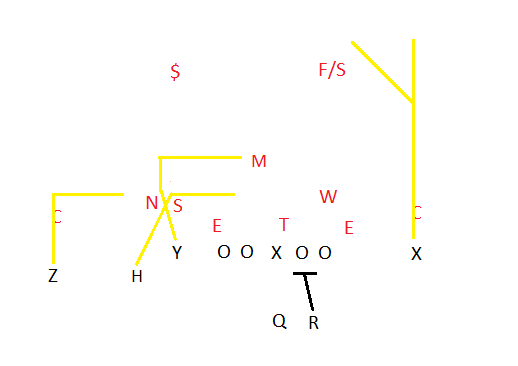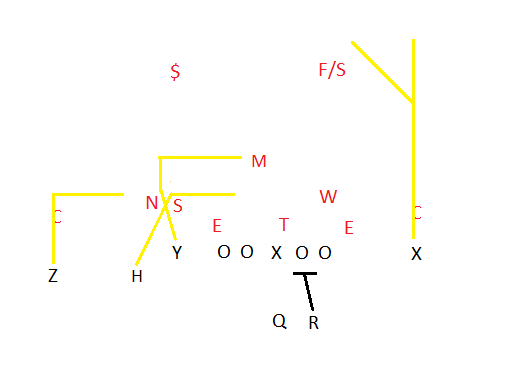There are no positives to take away from Stanford’s 16-6 loss to Northwestern on Saturday, and when there is nothing good to say, it’s generally better to say nothing at all. Moreover, I don’t really have any words for what happened. I’ve missed the shot that would win the game; I’ve lost plenty of matches in crunch time; I know the feeling, and what’s more, all of this happened on national television. There is a role for the media in critiquing the team, but Stanford’s loss was the number one story in college football, and at this point I’d just be piling on. So I will do my best to remain levelheaded.
If you need three yards, we’ll get you four. If you need ten yards, we’ll get you four.
(Before the catch.)
The game wasn’t exactly a tactical snooze-fest, but it wasn’t amazing either. But we did learn something from it, aside from the fact that punter Alex Robinson can kick the ball really far. Dire times have a way of revealing a team’s ultimate tendencies, and watching this game, we got a good chance to see how Stanford’s offense reacts when the situation is do-or-die. When Stanford was facing fourth down with three yards to go, the Cardinal went with the most reliable throw they could find.
“Levels” might be the most popular passing play in the NFL, and in a NFL-style offense like Stanford’s, you’re going to see this play a lot in crunch time. Memorize this play. You will make a lot of friends at cocktail parties with this play.
Stanford was facing fourth-and-three late in the fourth quarter with no timeouts, down two scores. (As usual, the video of the play is here: fast forward to 0:35.) But the operative term is “fourth-and-three” – yes, the team needed to score twice, but it needed to get a fresh set of downs first. Don’t worry too much about the deep route on the right; that’s just there to keep the safeties from crashing on the short routes to the middle, and quarterbacks barely ever find an opening there. Focus on the triple in route on the left.
This play is being run, essentially, for tight end Austin Hooper (H). Like a lot of shallow throws, it’s a hit-and-run. And Hooper justified Stanford’s faith in him by hauling in a four-yard pass and turning it into a 16-yard gain, keeping the Cardinal alive.
The principle of “Levels,” as Stanford runs it, is that there are two players who can give Hooper trouble: the defender opposite him (N) and the middle linebacker (M) that’s setting up shop right where Hooper is trying to go. So Stanford uses its other receivers to assist Hooper. “Levels” from a trips formation (three receivers on one side) aims to form a triangle in the passing game, stretching the defense both laterally with wide receiver Devon Cajuste (Z) and vertically with tight end Dalton Schultz (Y).
Cajuste surges forward and breaks towards the center of the field, attacking Hooper’s immediate defender and putting him in a bind: Do I help out my cornerback, who (as it turned out) may well get beaten by a step, or do I follow Austin Hooper? In this case, the nickelback stayed with Hooper. That opened up a first down for Cajuste.
But Cajuste had a bum ankle, and Kevin Hogan saw a different opportunity. It was Schultz who did the dirty work for Hooper on this play, and it was Schultz’ efforts that negated Northwestern’s numerical average (four defenders against three receivers).
By forcing his way forward and bodying up his man (and if you still doubt that the play wasn’t drawn up for Hooper, Schultz literally made a beeline for Hooper’s defender at the snap), Schultz ran a quick “pick” (screen) for Hooper. He also did double duty, stopping the middle linebacker from crashing on Hooper by showing off his intermediate passing threat. Giving Hooper a pick meant that Hooper could get a running start; holding the linebacker back gave him room to run.
That kind of teamwork is how you turn a four-yard catch into a 16-yard gain. It didn’t win the game, but wins are made out of plays like these. Stanford just didn’t have enough of them.
Contact Winston Shi at wshi94 ‘at’ stanford.edu.

